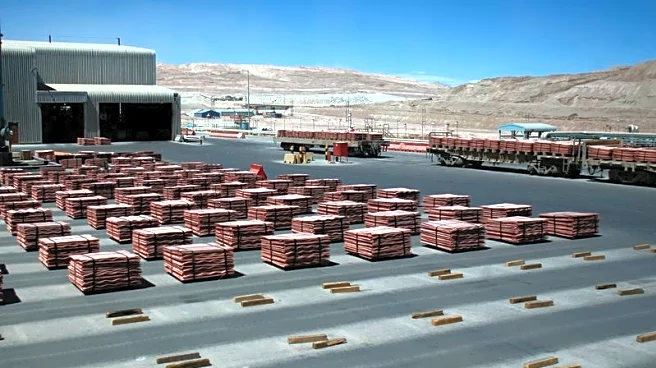What is the story about?
What's Happening?
A report commissioned by the Clean Energy Finance Corporation (CEFC) suggests that Australia could save over $30 billion in the next 25 years by adopting a coordinated approach to electricity transmission and generation infrastructure in the Pilbara region. The study, conducted by Marsden Jacob Associates, highlights the potential benefits of a common user transmission infrastructure (CUTI) system. This system would allow multiple miners, energy producers, and industrial users to connect to a single grid, thereby avoiding the duplication of private infrastructure and significantly reducing costs. The Pilbara region, responsible for about 40% of Western Australia's emissions, is heavily reliant on fossil fuels despite having abundant solar and wind resources. The report emphasizes the need for collaboration among industry, government, and developers to implement this infrastructure model.
Why It's Important?
The implementation of a shared infrastructure system in the Pilbara could have significant economic and environmental impacts. By reducing reliance on fossil fuels and optimizing resource use, the region could lower its emissions and contribute to Australia's broader decarbonization goals. The potential savings of $30 billion highlight the economic viability of such a project, which could also position Australia as a leader in clean energy. The report underscores the importance of urgent cooperation among stakeholders to avoid costly and inefficient solutions. Additionally, the benefits of a coordinated approach extend beyond major miners to mid-tier miners, emerging green industries, and regional communities, promoting inclusive economic growth.
What's Next?
The Western Australian government has already initiated steps towards this coordinated approach by launching the Pilbara Industry Roundtable in 2023. However, the report stresses the need for increased commitment from all stakeholders to ensure timely implementation. The CEFC emphasizes the importance of engaging with Traditional Owners to minimize land disturbance and align with long-term planning goals. As companies move at different speeds in their energy transition plans, continued collaboration and leadership are essential to realize the full potential of the CUTI system.
Beyond the Headlines
The proposed shared infrastructure model not only offers economic and environmental benefits but also presents an opportunity to address ethical and cultural considerations. By reducing land disturbance and involving Traditional Owners in the planning process, the project could set a precedent for sustainable and inclusive development. Furthermore, the success of this initiative could inspire similar approaches in other regions, contributing to a global shift towards cleaner and more efficient energy systems.
AI Generated Content
Do you find this article useful?















